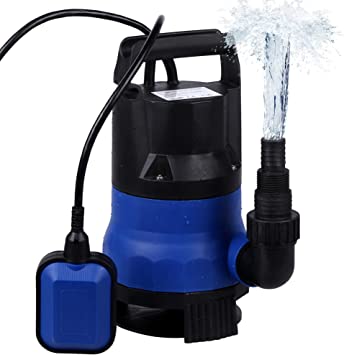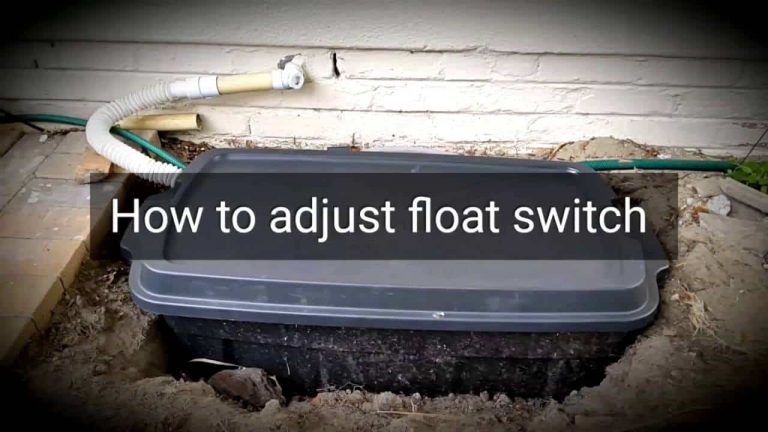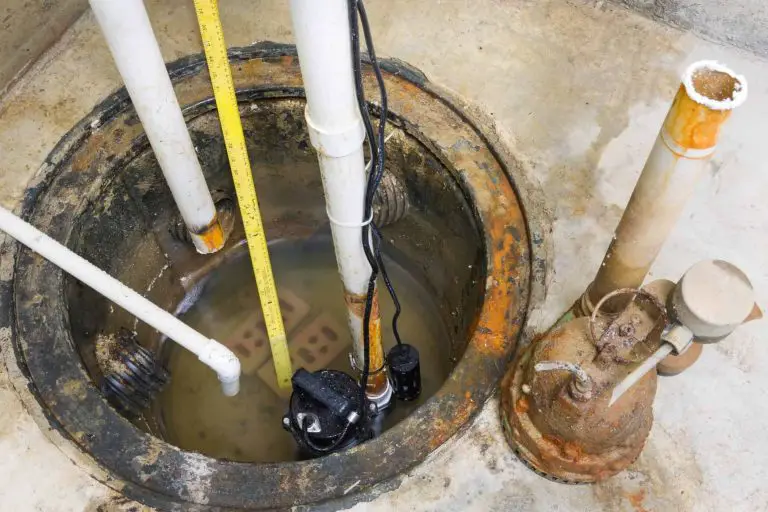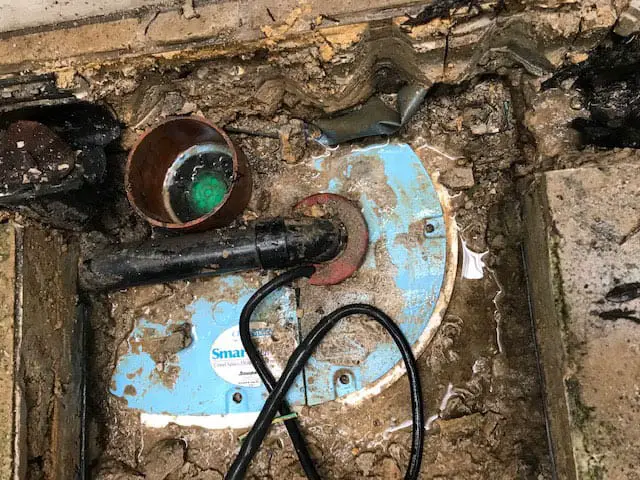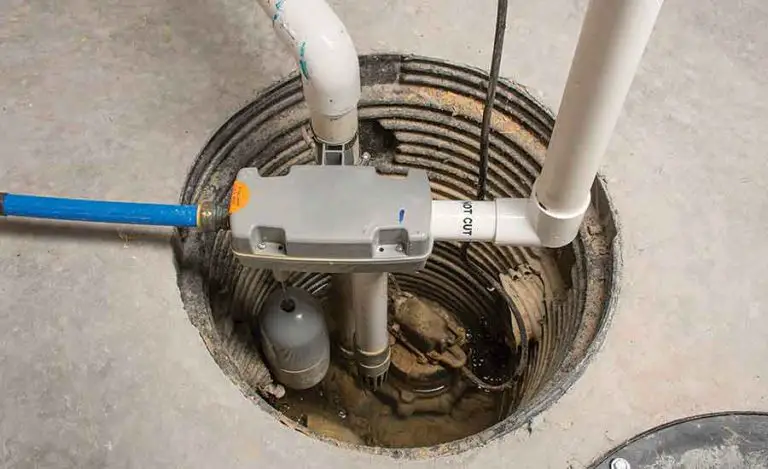How To Hide Sump Pump Discharge Pipe
Having a sump pump discharge pipe can be an eyesore, but it doesn’t have to stay that way! With the right materials and some DIY know-how, you will learn how To hide sump pump discharge pipe to blend in with the rest of your yard. This guide covers all the necessary information and step-by-step instructions for hiding a sump pump discharge pipe successfully, as well as pointing out any mistakes to avoid. Whether you’re a DIY enthusiast or just want a quick fix, this guide has all the help you need in order to keep your home looking good and ensure your pump runs without interruption.
Introduction To Sump Pump Discharge Pipes
A sump pump discharge pipe is a PVC pipe attached to the sump pump’s discharge side. It carries the water that has been pumped out of your home away from your foundation.
The size of the discharge line should be based on the manufacturer’s recommendations to ensure proper flow. It is important to bury the discharge pipe at least 2 feet below frost line depth, which varies by region, so that it can function correctly during winter months.
To avoid clogging, it’s wise to re-route your discharged pipe away from your home towards an area with good drainage like a street or garden. Alternatively, consider using a Flotec FP0012-6U-P2 hose kit for emergency or permanent use as this reduces potential obstructions leading into those areas where you don’t want flooding.
Another common recommendation is drilling a weep hole in the plastic hose to prevent backflow and keep an open flow path for discharged water. To make sure that your appearance ain’t affected due to these ugly pipes running all along around your house till they hit their exit points try hiding them by running through shrubs, gardens or walkways depending on their location – having said this always ensure no damage is caused when digging near foundations since beneath everything lies intricate plumbing. Hiding sump pump pipes can improve not only aesthetics but also safety considerations while improving drainage of external water sources ultimately keeping us protected from overflowed basements & damages caused due to stagnant rainwater around our property even during rains/run-off season!
Reasons To Hide The Sump Pump Discharge Pipe
Hiding the sump pump discharge pipe is a common practice among homeowners. There are various reasons why one may choose to conceal their sump pump’s discharge pipe.
Firstly, it can improve the overall aesthetic appearance of your property. Discharge pipes are often unsightly and can ruin the look of an otherwise beautiful lawn or basement.
Additionally, hidden discharge pipes can prevent blockages or freezing. When a sump pump operates in colder weather, there is a risk that the water will freeze inside the pipe and cause it to clog or burst.
Hiding the pipe underground or in an insulated enclosure will mitigate this issue. Complying with local regulations or homeowner association rules is another reason why you might want to hide your sump pump’s discharge pipe.
Certain areas have restrictions on where and how far away from a building you are allowed to discharge water, and these regulations must be followed. Furthermore, hiding your discharge pipe offers protection against vandalism and accidental damage that could occur if exposed.
By keeping the pipe out of sight, you reduce its chances of being hit by lawnmowers, gardening equipment or from kids playing nearby. Lastly, concealed pipes decrease noise and odors emanating from your sump pump system while safeguarding against potential safety hazards such as tripping over exposed pipes when walking around outside at night. Hiding your sump pump’s discharge pipe has several advantages ranging from improving aesthetics to minimizing safety risks and complying with regulatory requirements imposed by homeowner associations’ rules or local laws regarding water discharging restrictions for properties near drainage systems such as riversides prone to flooding during rains.
Choosing The Right Location To Hide The Pipe
When it comes to hiding your sump pump discharge pipe, the location you choose is essential. You want to ensure that your pipe stays hidden while also routing the water away from your home’s foundation.
Here are some important tips to keep in mind when choosing a location for your discharge pipe. Firstly, always route the discharge pipe away from your home.
This helps prevent water damage and flooding in basements or crawl spaces. Additionally, make sure that any landscaping around the area doesn’t affect drainage.
Consider burying your discharge line as well. This not only hides the pipe but also keeps it protected from potential damage by lawn mowers or other equipment.
Be sure to extend the discharge point at least 10 feet away from your home’s foundation, ensuring that water is far enough away to prevent damage. You may also want to consider building a small enclosure or running the pipe through a PVC conduit to hide it completely.
This can provide aesthetic appeal while still routing water effectively. Lastly, locate the pipe coming through the outside wall and plan carefully before excavating around it.
Too much digging can lead to additional problems like soil erosion and unstable ground around your home’s foundation. With these tips in mind, you can choose an optimal location for your sump pump discharge pipe that prevents water damage while keeping everything neat and tidy on the surface of your lawn or landscape design.
Materials And Tools Needed For Hiding The Pipe
When it comes to hiding the sump pump discharge pipe, you’ll need a few essential materials and tools. One of the primary items to consider is PVC pipes, which come in 1 1/4- or 1 1/2-inch sizes.
The size you choose will depend on the volume of water being discharged by your sump pump. You’ll also need PVC cement and male and female adapters for connecting the pipes.
If your discharge outlet is located above ground level, you may also require a check valve to prevent backflow from the outside into your basement or crawl space during heavy rainfalls. Additionally, flexible PVC pipes can be utilized if there are any bends or turns in your discharge line.
You would also need a shovel for digging a trench that will house the pipe, decorative panels or lattice works for enclosures where necessary as well as plants or vines for natural cover especially if you want to add some aesthetic value to it. You could use fake flooring that conceals the area where the pipe discharges too.
When it comes to hiding your sump pump discharge pipe, having these materials on hand will make your installation process more straightforward and efficient. However, ensure that you have obtained all necessary building permits before attempting any modification with respect to plumbing so as not to violate any code governing such precepts within your locality no matter how small it may seem like!
Step-by-step Instructions For Hiding The Sump Pump Discharge Pipe
To hide a sump pump discharge pipe, you’ll need to follow a few simple steps. First, attach the PVC pipe to the discharge point of the sump pump using PVC cement.
Make sure to prime the PVC pipe and connectors with PVC primer before installation. Next, drill a weep hole in the discharge pipe about 6 inches above its end.
This hole will serve as a drain and prevent any buildup of water that could cause blockages. Install a check valve in the discharge line and tighten its rubber baring with a screwdriver to prevent backflow into your home.
Then, create a structure to conceal the discharge pipe or use PVC pipes to create a false wall. You can also bury the pipes underground with some gap between them to prevent freezing during cold temperatures.
Lastly, decorate your sump pump cover or install floor-to-ceiling curtains around it for more aesthetic appeal. Cover your sump pit with its lid and test your pump before securing its bolts in place. By following these steps, you can easily hide your unsightly sump pump discharge pipe while still ensuring that it functions effectively for many years to come.
Tips For Maintaining The Hidden Pipe
Landscaping is an excellent way to keep the unsightly sump pump discharge pipe out of view. You can use attractive mulch or boulders to cover it up and blend it in with the surrounding environment.
However, there are a few crucial things that you should do to ensure that the pipe is hidden efficiently. Firstly, check whether the discharge pipe is securely positioned and directing water at least 20 feet away from your home’s foundation.
This measure prevents any water damage and offers extra protection against basement flooding. Additionally, clear any debris or clogs that may prevent proper water flow from the drainpipe.
Also, consider where you place the endpoint of your pipe because it can determine how effectively and safely your sump pump works. To save on labor costs during installation, be sure to provide enough space for proper drainage once you install a new drain line.
Moreover, if there is a clog in the discharge line, remove it immediately for smoother pumping operations when called upon. If left unaddressed for too long, these blockages can strain your sump pump motor and cause costly damages.
Finally, remember always to keep an eye on your hidden sump pump discharge pipe regularly. By conducting routine maintenance checks and making minor repairs as soon as they become necessary lays a solid groundwork for longevity of operation. With these guidelines in place – mulching or hiding exposed pipes with rocks/boulders remains an attractive way, so homeowners don’t have to deal with bulky pipes polluting their backyard while still able to maintain efficiency and appeal.
Common Mistakes To Avoid When Hiding The Pipe
When it comes to hiding a sump pump discharge pipe, there are some common mistakes that homeowners must avoid to ensure its efficiency and safety. Here are 7 things to keep in mind: 1.
Be cautious when digging near the sump pump system to avoid gas lines or other underground hazards. 2.
Proper routing of the discharge line is essential. It’s important not to route it towards your property or your neighbor’s property as this may cause water damage or soil erosion.
Instead, direct it towards an appropriate location with proper drainage. 3.
PVC cement should be used when attaching pipes together as this helps ensure a tight seal that won’t leak. 4.
Consider enclosing the pipe using landscaping such as tall bushes or hedges, rocks, planters, or artificial flooring material like stone veneer or faux wood decking. This will give your yard neater curb appeal while also hiding the pipe from view.
5. Test and maintain the sump pump system regularly to prevent clogging, rusting and other issues that could lead to malfunctioning of the pump.
6. Ensure tight pipe and fitting connections, so air doesn’t get into your pump and cause loss of pressure which can decrease its effectiveness.
7. Angle the discharge line away from your home’s foundation following local building codes for appropriate placement distances, which prevents any flooding damaging adjacent properties.
Hiding a sump pump discharge line can make a difference in overall aesthetics while also protecting against moisture concerns; however, it is more than just placing some greenery around it. By avoiding these mistakes you can help protect both yourself and neighbors against any accidental damage caused by improper installation technique. It’s important you are aware of all relevant regulations before burying drainage lines underground, to prevent any violations from municipality ordinances about placement locations which could result in heavy fines, so do due diligence up front.
Alternative Solutions For Hiding The Sump Pump Discharge Pipe.
If you’re looking for alternative solutions to hide your sump pump discharge pipe, there are several options available. One option is to consider backyard landscaping by incorporating rocks, plants, or a small garden around the area to conceal the pipe.
Another solution is installing a French drain system that connects to the sump pump and routes the water away from your home. This option can easily be hidden with grass and landscaping.
A submersible pump may also be a good alternative for those who want their sump pump completely concealed in the basement. This type of pump can be installed directly into your sump pit and will only require a small section of piping to route out water.
In addition to these solutions, there are some creative ways you can incorporate design into hiding your sump pump discharge pipe. Installing a floor-to-ceiling curtain around the area is not only stylish but also an affordable solution that easily conceals any piping hanging on walls or ceilings.
Or if you have space available, constructing a closet around it will give you additional storage while hiding the unsightly pipes. No matter which solution you choose, it’s important to consider safety protocols when dealing with PVC pipes, especially when connecting them directly onto gas lines or other sensitive areas such as electrical wiring or appliances attached together in one circuit. Work with professionals and follow specific guidelines set by your local city government or state regulations on proper installation practices for PVC piping materials used on sump pumps discharging systems running through indoor-outdoor spaces at home.
Conclusion
If you want to improve the look of your home while also protecting it from flooding, hiding your sump pump discharge pipe is a good option. Carefully choose an appropriate location for caching the pipe, using the right materials and tools for the job.
Avoid making mistakes such as burying the pipe too deep or using incompatible materials. If hiding or disguising the pipe is not possible, explore alternative solutions like building a rock garden or surrounding it with decorative fencing. With these steps in mind, you can successfully hide your sump pump discharge pipe and enjoy improved aesthetics at home.

